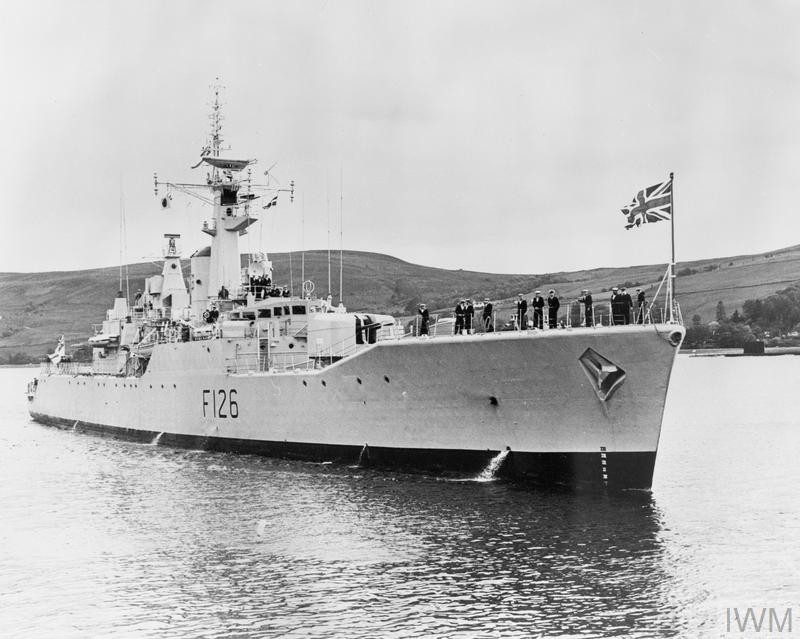Wednesday 28 April 1982 was a relatively quiet day in terms of Operation Corporate, with many ships continuing on passage or, in the case of the Amphibious Group, preparing at Ascension Island for the landings they hoped to launch on the very different terrain of the Falkland Islands.
The Carrier Battle Group powered on through the heavy weather, which had eased sufficiently on 28 April to allow the completion a successful air defence exercise – just in time to put the training into practice by chasing off the persistent Argentine Air Force Boeing 707 which had come around snooping once again.
Small Fleet tanker RFA Blue Rover had called in at Ascension on her way to the South Atlantic, but barely had the chance to drop anchor before she was on her way again.
Plans were being honed by British top brass as to the exact location of the British landings, three sites had been identified as being the best options, but with two of them being near to Stanley, which was firmly under the control of Argentine forces, the more distant San Carlos Water, off the strait which separated East and West Falkland, was fast becoming the obvious choice.
Also on 28 April part of the Antrim Group which had retaken South Georgia departed the cold, lonely island.
Frigates HMS Plymouth and HMS Brilliant sailed west to join the main Carrier Battle Group as it approached the Total Exclusion Zone (which had yet to formally come into being).
That left destroyer HMS Antrim herself, tanker RFA Tidespring and ice patrol ship HMS Endurance in South Georgia; the former two ships would sail four days later, leaving Endurance to act as guardship.
One of the Royal Navy’s two Castle-class patrol ships, HMS Leeds Castle, left Portland after upgrade work in Portsmouth; her sister, HMS Dumbarton Castle, was to follow two days later.
Leeds Castle clocked up a lot of mileage during the Conflict, acting as both a guardship and despatch vessel while shuttling between Ascension, South Georgia and the Falklands.
Today’s image from the Imperial War Museum collection (© IWM FKD 587) shows Type 12 frigate HMS Plymouth shortly before the Falklands Conflict.
* These posts can only give a brief sense of what was a complex and fast-moving situation 40 years ago, and cannot cover the involvement of every ship, squadron and unit in detail – for a much more comprehensive account see naval-history.net at https://www.naval-history.net/NAVAL1982FALKLANDS.htm
The Royal Naval Association is the biggest collective group of Royal Naval veterans and serving personnel, with more than 270 branches in the UK and overseas.
The RNA provides those with a link to the Royal Navy access to a life-long community of like-minded and supportive individuals.
Our community provides companionship, resilience, comradeship and unity to anyone and everyone with a Naval story, supporting them through life's highs and lows.
Membership is now free (please note, some branches may charge a small annual subscription, payable locally on their request) – see https://royal-naval-association.co.uk/join-us/ for details of how to join.
